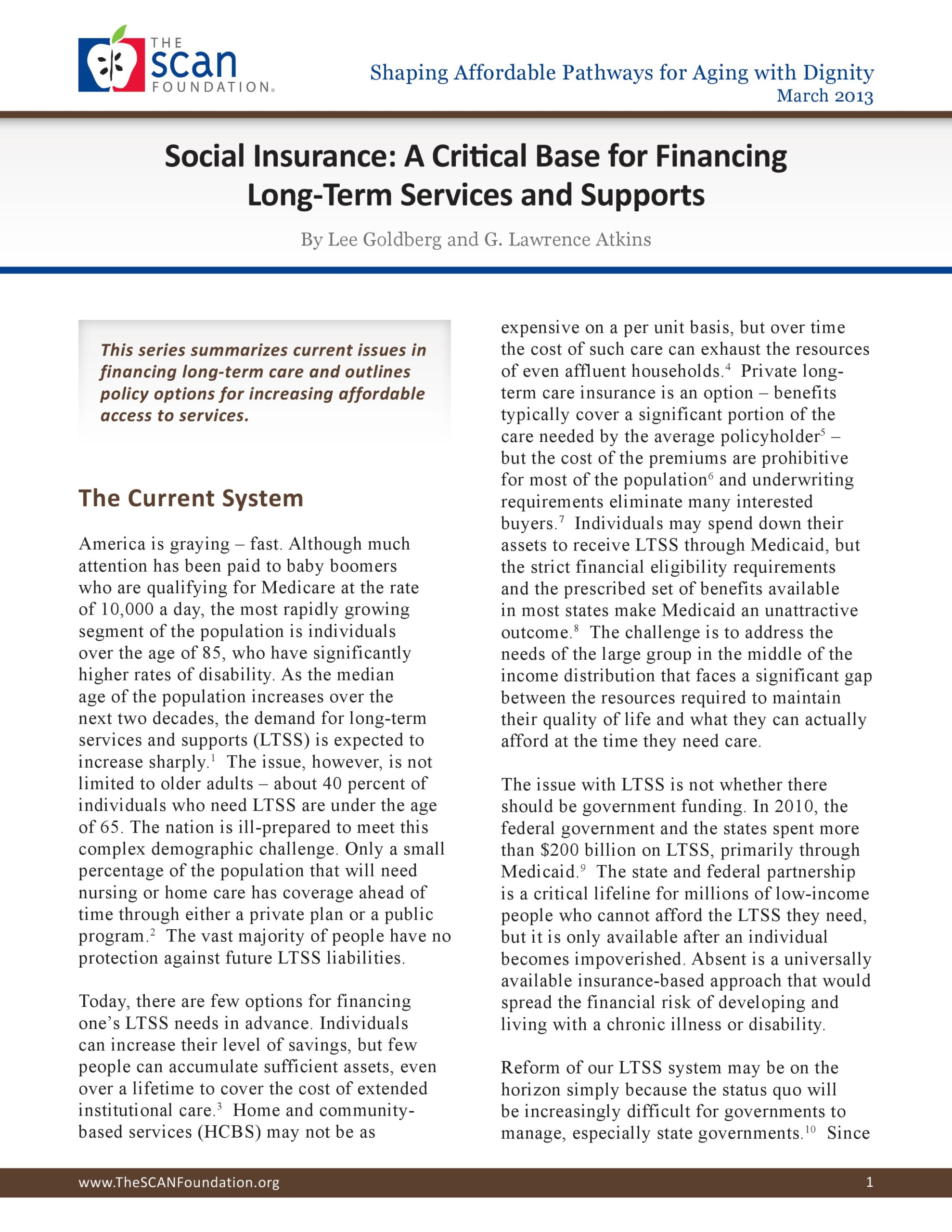Social Insurance: A Critical Base for Financing Long-Term Services and Supports
summary
This brief series summarizes current issues in financing long-term care and outlines policy options for increasing affordable access to services.
Date Updated: 03/20/2013The Current System
America is graying – fast. Although much attention has been paid to baby boomers who are qualifying for Medicare at the rate of 10,000 a day, the most rapidly growing segment of the population is individuals over the age of 85, who have significantly higher rates of disability. As the median age of the population increases over the next two decades, the demand for long-term services and supports (LTSS) is expected to increase sharply.1 The issue, however, is not limited to older adults – about 40 percent of individuals who need LTSS are under the age of 65. The nation is ill prepared to meet this complex demographic challenge. Only a small percentage of the population that will need nursing or home care has coverage ahead of time through either a private plan or a public program.2 The vast majority of people have no protection against future LTSS liabilities…
Download the publication for all visuals and complete references.
Continue Reading
This policy brief provides background on the historical development of benefit eligibility triggers in the private long-term care insurance market. Understanding how these triggers came into being can provide important information to those charged with implementing the CLASS Plan.
This policy brief provides information about how long-term care insurers implement benefit eligibility triggers in the private insurance market. The way in which companies have operationalized benefit eligibility triggers can inform the development of regulations for the CLASS Plan.
This policy brief provides information on the benefit eligibility assessment process in the private long-term care insurance industry. It focuses on how long-term care insurers use the information in the adjudication process, who is involved in the process, and how activities of daily living and cognition are assessed.


